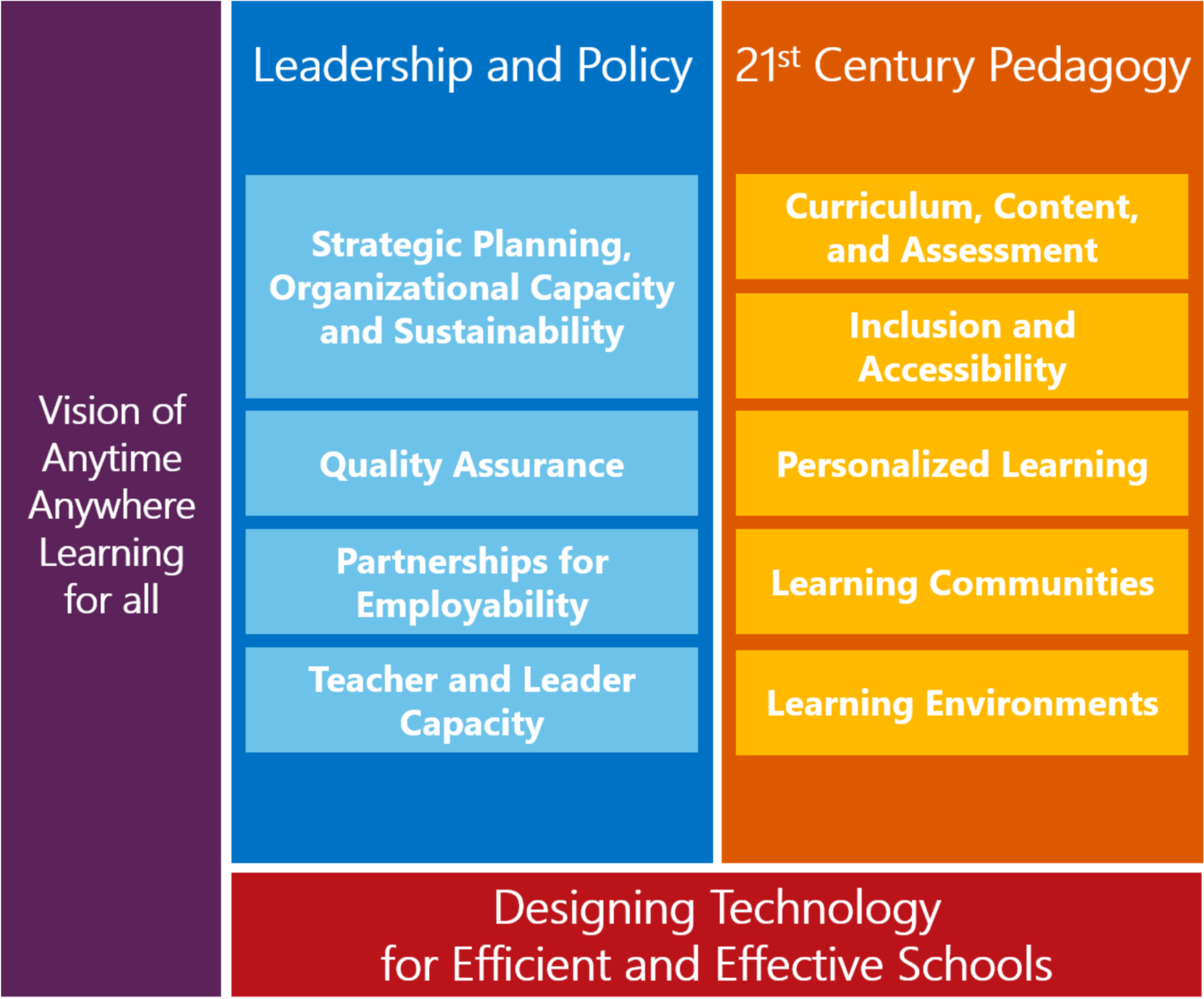
Quality Assurance & Technology in Education
Education leaders at all levels can benefit from applying the planning, monitoring and evaluation cycle and outcomes-based planning and evaluation to education transformation initiatives.
Education leaders at all levels can benefit from applying the planning, monitoring and evaluation cycle and outcomes-based planning and evaluation to education transformation initiatives. Monitoring and evaluation can help educational transformation programs define and measure quality indicators and measures of the education transformation process, gauge progress toward desired educational outcomes, increase stakeholder participation, and empower school leaders and teachers to build and sustain transformation in schools. As each educational system is unique, evaluators should be prepared to vary their evaluation approach based on program purpose and context. Technology is playing an increasingly important role in increasing data access and use by school leaders and teachers to inform instruction and improve student outcomes in education transformation initiatives. At SmartClass, we just don't believe this by heart but we also act upon it by working with educators around the world.
We believe in education technologies should be made by teachers, for educators and with educators.

A first step in building an effective education transformation program is defining desired results or outcomes (measurable changes in people or organizations) that will help address critical needs or problems that fall within your organization’s mission.Thinking about program needs and desired results should precede planning of program, monitoring or evaluation activities. Once you have desired outcomes that address the problem, it’s time to consider how the program will achieve them.
While outcomes-based models and results-based management can be valuable tools, how they are implemented impacts their effectiveness as methods for managing education transformation. This is one of the reasons why, it took SmartClass and like products to not develop overnight but years to evolve and develop with different stakeholders in mind.
From Microsoft Education Paper published on March 2014 at microsoft.com/education :
'Several recent studies have identified key indicators of success in educational transformation. Together, these research studies provide evidence that over time, well-planned technology-enhanced initiatives can help schools and education systems achieve education transformation.
SRI International and in-country evaluators in 7 nations (Australia, England, Finland, Indonesia, Mexico, Russia, and Senegal) jointly conducted a study of innovative teaching and learning or ITL (Shear, Gallagher and Patel, 2011). In each nation, they surveyed teachers and school leaders in 24 schools, half identified through prior research as innovative and half as comparison schools. They also conducted case studies of a sample of the innovative schools in each nation. They found that across nations, certain practices or conditions were more likely to be in place in schools where innovative teaching practices occurred, including:
-
A school culture that offers a common vision of innovation as well as consistent support that encourages new types of teaching
-
Teacher collaboration that focuses on peer support and the sharing of teaching practices
-
Professional development that involves the active and direct engagement of teachers, particularly in practicing and researching new teaching methods'
“Monitoring and evaluation are key tools for education leaders as they seek to bring about educational transformation at the national, regional and local levels. Together with planning, they are part of well-established program management cycles and theories of program action that center on desired outcomes—meaningful changes in the lives of people and in organizations.” Dr. Tom Clark
Makaleler Posted at: 07/01/2022

